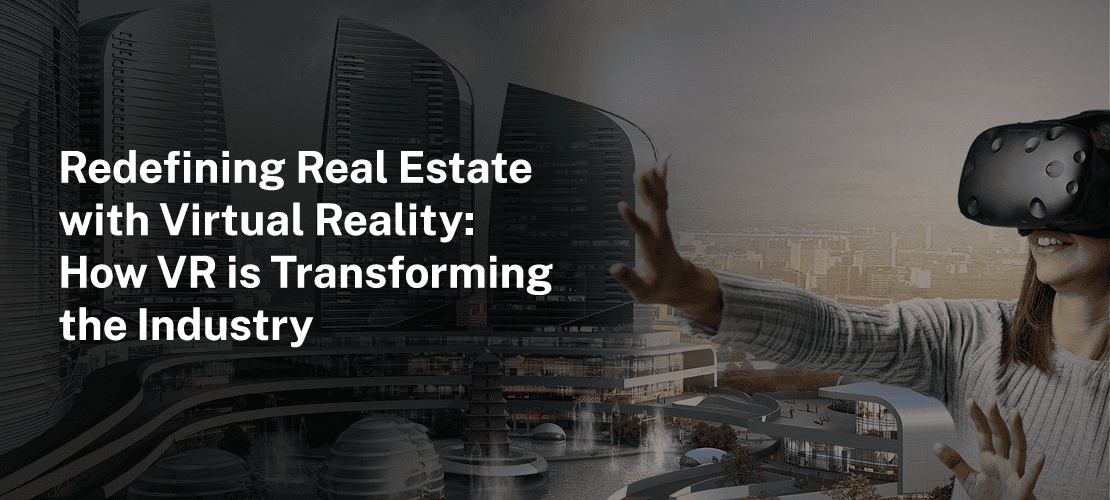Redefining Real Estate with Virtual Reality: How VR is Transforming the Industry

- By BidHom Team
-
 Published on December 10, 2024
Published on December 10, 2024
 7 minutes read
7 minutes read
Real estate has always been a tactile business—decisions hinge on seeing properties in person, navigating through open houses, and feeling the spaces ourselves. But in this fast-paced world where time is precious and interconnectivity is the rule of the day, technology demands that shift. That’s where virtual reality (VR) discovers its place in the real estate sector.
VR isn’t just a trend—it is changing the way we experience and understand real estate. It does not only upgrade the already existing tools, such as a property tour and staging, but it opens a completely new dimension of possibilities. If you still look at VR under the prism of “only virtual tours,” it is time to broaden that outlook. This technology is empowering agents, buyers, and developers in ways that will further change the real estate industry.
With the emergence of real estate auction websites, there’s an enhanced scope for virtual reality taking center stage in redefining the experience of potential clients. Here’s a look at how VR is turning the world of real estate upside down, creating more value, deeper connections, and fresh opportunities.
The Power of Immersive Engagement
Virtual tours might be the new buzzword, but VR offers a deeper level of interaction that goes beyond just viewing a property. Through VR, buyers don’t just walk through a home; they experience it. They can move walls, adjust layouts, and explore spaces they haven’t even seen yet.
Imagine a buyer visualizing what the space can be—adjusting the kitchen layout, changing the colors of the walls, or anything to make their version of what could be. It’s this level of interactivity that gets them not only excited but engaged in a manner traditional tours just could never achieve. That’s before they even set foot inside the property; it is an emotional connection.
VR as a Data Goldmine for Buyers’ Preferences
VR doesn’t just engage buyers; it helps agents understand them better. Every step a buyer takes while navigating a VR home is tracked. What areas do they linger in? What features do they interact with? Where do they lose interest?
This behavioral data isn’t nice to have; it’s a game-changer. It lets agents micro-target their listings, tailor their marketing materials, and personalize their audience. And as the agents pay attention to micro-interactions, the recommended recommendations will be that of personalized relevance to better conversion.
Crossings over Geographic Boundaries
The physical restrictions no longer apply to real estate. It is possible for buyers from anywhere in the world to now “walk” through a home across the country—or across the world. For agents, that means access to an international pool of buyers with no geographical constraints.
The ability to host virtual tours of properties for buyers thousands of miles away adds a level of convenience and accessibility that traditional real estate simply cannot match. Whether they are overseas or across the state, VR enables agents to connect with potential clients no matter where they are.
Cost-Efficient, High-Impact Home Staging
Traditional home staging can be a costly affair—renting furniture, hiring designers, and the logistics of setting everything up. VR, however, is changing that equation.
Not only does VR save money, but it also opens up new possibilities for exposure to a home. It helps agents digitally stage a home for buyers, providing design options that can be tailored to buyers’ tastes without having a real-world staging expense associated with it. It’s an efficient, flexible, and cost-effective solution that will also serve as a tool for creativity and differentiation in a competitive market.
Virtual Collaboration for Developers and Stakeholders
For developers and investors, VR presents a chance to see real estate projects before they break ground. A virtual walk-through allows stakeholders to tour buildings, experience layouts, and make adjustments before ground is ever broken.
This technology is priceless in streamlining the decision-making process—whether it’s securing investors or marketing a project to potential buyers. Instead of relying on flat plans or renderings, VR provides a realistic preview that captures the true feel of the project.
Revolutionizing Remote Meetings and Collaboration
The concept of remote meetings is nothing new, but VR takes it further by offering a fully immersive experience where clients, agents, architects, and developers can collaborate in real-time, no matter where they are. Instead of relying on video calls, participants can interact with a shared virtual environment.
This means decisions would be quicker, discussions clearer, and ideas more vibrant. Instead of just talking about some property, everyone can virtually step into it together, making the whole exercise more fun and productive in the end.
Breaking Construction Barriers: Selling Before Building
The greatest challenge when selling new or under-construction properties is enabling a buyer to envision something he cannot see. However, through VR, even the most unfinished spaces can come to life.
Buyers can walk through a virtual version of the property, explore the design, and understand the flow of the space before it’s built. VR is a powerful solution for builders and developers to create confidence and sell properties earlier in the process. It also clarifies design choices and enables feedback to be adjusted before physical work begins.
Advertising That Captivates and Engages
With VR, real estate marketers can create completely immersive experiences that take potential buyers to the very heart of the property. Imagine showcasing not just the home, but the neighborhood, the local parks, or local amenities—all in 3D.
This level of engagement is not merely a tool for attention but, rather, an experience that rings builds trust, and leaves an impression. Virtual advertising is not only creative but it is also powerful, offering buyers a tactile feel for a property without ever stepping foot inside.
VR: Not Just a Trend, but a Real Future in Real Estate
Virtual reality isn’t just a passing phase in real estate—it is evolving into the very core of where the real estate industry is going in the future. From personal tour offers and behavioral insights gained to training agents and an immersive ad, VR serves more than just a single purpose; it’s a completely new way of doing business for creating stronger connections and more value.
It’s already about to grow much more if it continues to evolve. Beyond that, it is time to look beyond the surface level as it brings transformative possibilities that technology has in store for the world. The future of real estate is virtual, immersive, and personal and is already here.
To tap into the unlimited potential of VR, you can either work with a real estate app development company or invest in a robust platform. Real estate app development costs can be taxing for small agents. That’s where a SaaS solution like BidHom comes into play.
Leverage the Power of Virtual Reality with BidHom
As an agent or broker, if you really want to leverage the potential of VR for your business, BidHom can help you get started. Agents and brokers can build their real estate auction website and start listing. BidHom comes with promising VR capabilities, allowing realtors to offer virtual tours of the properties from any corner of the world. Agents can host virtual open houses directly on their BidHom website, engaging potential buyers without geographical barriers. Besides, it offers interactive map features that allow buyers to visualize the properties in satellite view with a 360-degree walkthrough. BidHom incorporates AR, further enhancing property visualization. Its AR features overlay virtual information onto the real-world environment for the user, be it in the form of property characteristics or room dimensions. This therefore aids in improving decision-making processes.
Why wait any longer? Get in touch with us to start your journey with a truly empowering platform.



Share Article